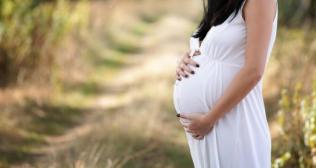
Obstetrics and Gynaecology
Jaundice In New Born Babies
Jaundice In New Born Babies Jun 21, 2014
 Jaundice is a condition that makes a newborn’s skin and the white part of the eyes look yellow. It happens because of too much bilirubin in the baby’s blood. Read more
What is jaundice?
Jaundice is the name given to the yellowish appearance of the skin and the whites of the eyes.
Is jaundice common in newborn babies?
Jaundice is very common in newborn babies. About 90 per cent of newborn babies will become jaundiced two or three days after birth. It gradually disappears in most babies by the time they are two weeks old. Jaundice does not necessarily mean your baby is ill.
Can jaundice occur within 24 hours after birth?
Jaundice can occur within the first 24 hours after birth, but this is rare. If this happens it is important that a specialist doctor, a neonatologist or paediatrician sees your baby.
What causes jaundice in babies?
When your baby is in the womb the waste products are removed through the placenta. Once your baby is born their own body has to do this. It can take some time for a baby to be able to remove their waste products properly. Therefore, in the early days of your baby’s life some waste products may build up in her/his body. One waste product is called bilirubin. If there is too much bilirubin your baby will be jaundiced.
What is bilirubin?
The body continuously makes new red blood cells and breaks down old ones. Bilirubin is made when the old red blood cells are broken down.
Would jaundice go away?
Jaundice normally disappears by the time your baby is 10 to 14 days old. This may take a bit longer, three weeks, if the baby is premature.
Can the level of jaundice be measured?
Yes by a simple blood test. It is called serum bilirubin. It is important that jaundice is monitored to ensure that the bilirubin level does not get too high.
Is there any treatment for jaundice?
Most babies will need no treatment at all and the jaundice will disappear by the time the baby is two weeks old. However, a small number of babies do need some treatment, depending on how much bilirubin is there in the blood. If the jaundice level gets too high there can be a concern that it could cause damage to your baby’s brain (kernicterus) in this case the normal treatment is phototherapy to reduce the bilirubin level. Your baby will be placed naked, except for some eye pads under a special blue light. The light breaks down the bilirubin. You will be encouraged to feed your baby so that your baby produces plenty of urine. Phototherapy can usually be stopped within few days.
Should I worry if my baby has jaundice even after two weeks?
If that’s the case then look at the colour of your babies stool and urine. The colour of stool should be green or mustard yellow. The colour of urine of a newborn is colourless. If your baby’s urine is yellow and/or the stools are pale this can indicate liver disease and you must report this to your doctor. Do not wait until after 14 days if you notice this earlier. You would then be asked to see a paediatric liver specialist for further investigation.
Why do some babies remain jaundiced?
There can be a number of reasons why jaundice continues:
(i) Your baby may have a condition in which the blood cells break down more quickly than is normal for babies. This is often recognised very soon after the baby is born, or even during pregnancy, and further treatment may be necessary.
(ii) Jaundice may continue occasionally in babies who are entirely well and are being breast fed. Breast feeding may safely continue and the jaundice will fade with time.
(iii)Your baby may have a problem with her/his liver.
What should be done if my baby’s jaundice does not go?
The golden rules are:
• If jaundice continues beyond 14 days of age in a full-term baby or 21 days in a premature baby then this should be investigated.
• If your baby’s stools and urine are not of the right colour then this should be investigated at whatever age — you don’t need to wait until the baby is two or three weeks old. Consult your doctor when required.
Jaundice is a condition that makes a newborn’s skin and the white part of the eyes look yellow. It happens because of too much bilirubin in the baby’s blood. Read more
What is jaundice?
Jaundice is the name given to the yellowish appearance of the skin and the whites of the eyes.
Is jaundice common in newborn babies?
Jaundice is very common in newborn babies. About 90 per cent of newborn babies will become jaundiced two or three days after birth. It gradually disappears in most babies by the time they are two weeks old. Jaundice does not necessarily mean your baby is ill.
Can jaundice occur within 24 hours after birth?
Jaundice can occur within the first 24 hours after birth, but this is rare. If this happens it is important that a specialist doctor, a neonatologist or paediatrician sees your baby.
What causes jaundice in babies?
When your baby is in the womb the waste products are removed through the placenta. Once your baby is born their own body has to do this. It can take some time for a baby to be able to remove their waste products properly. Therefore, in the early days of your baby’s life some waste products may build up in her/his body. One waste product is called bilirubin. If there is too much bilirubin your baby will be jaundiced.
What is bilirubin?
The body continuously makes new red blood cells and breaks down old ones. Bilirubin is made when the old red blood cells are broken down.
Would jaundice go away?
Jaundice normally disappears by the time your baby is 10 to 14 days old. This may take a bit longer, three weeks, if the baby is premature.
Can the level of jaundice be measured?
Yes by a simple blood test. It is called serum bilirubin. It is important that jaundice is monitored to ensure that the bilirubin level does not get too high.
Is there any treatment for jaundice?
Most babies will need no treatment at all and the jaundice will disappear by the time the baby is two weeks old. However, a small number of babies do need some treatment, depending on how much bilirubin is there in the blood. If the jaundice level gets too high there can be a concern that it could cause damage to your baby’s brain (kernicterus) in this case the normal treatment is phototherapy to reduce the bilirubin level. Your baby will be placed naked, except for some eye pads under a special blue light. The light breaks down the bilirubin. You will be encouraged to feed your baby so that your baby produces plenty of urine. Phototherapy can usually be stopped within few days.
Should I worry if my baby has jaundice even after two weeks?
If that’s the case then look at the colour of your babies stool and urine. The colour of stool should be green or mustard yellow. The colour of urine of a newborn is colourless. If your baby’s urine is yellow and/or the stools are pale this can indicate liver disease and you must report this to your doctor. Do not wait until after 14 days if you notice this earlier. You would then be asked to see a paediatric liver specialist for further investigation.
Why do some babies remain jaundiced?
There can be a number of reasons why jaundice continues:
(i) Your baby may have a condition in which the blood cells break down more quickly than is normal for babies. This is often recognised very soon after the baby is born, or even during pregnancy, and further treatment may be necessary.
(ii) Jaundice may continue occasionally in babies who are entirely well and are being breast fed. Breast feeding may safely continue and the jaundice will fade with time.
(iii)Your baby may have a problem with her/his liver.
What should be done if my baby’s jaundice does not go?
The golden rules are:
• If jaundice continues beyond 14 days of age in a full-term baby or 21 days in a premature baby then this should be investigated.
• If your baby’s stools and urine are not of the right colour then this should be investigated at whatever age — you don’t need to wait until the baby is two or three weeks old. Consult your doctor when required.



















